Mountain Laurel
- October 17, 2023
- 0 comment
Mountain Laurel, scientifically known as Kalmia latifolia, is a captivating and resilient evergreen shrub native to the eastern United States. With its glossy, dark green foliage and delicate, bell-shaped blossoms, Mountain Laurel graces woodlands and gardens with its natural beauty. Its name stems from the resemblance of its clustered flowers to laurel, and it is often celebrated for its picturesque appearance.
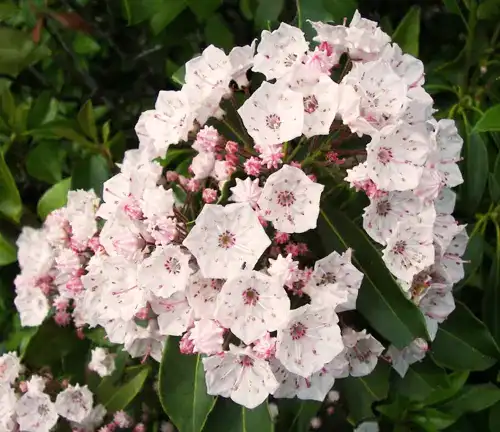
These blossoms come in an array of colors, including shades of white, pink, and deep rose, adding to the plant’s allure.

Beyond its aesthetics, Mountain Laurel is revered for its adaptability, thriving in a range of soils and climates. However, it’s essential to note that all parts of the plant are toxic if ingested, making it important to admire from a distance and handle with care. Mountain Laurel is not only a cherished ornamental plant but also a symbol of the lush, diverse landscapes of the Eastern United States.
| Characteristics | Description |
| Scientific Name | Kalmia latifolia |
| Common Names | Mountain Laurel, Calico Bush, Spoonwood |
| Plant Type | Evergreen shrub |
| Native Region | Eastern United States |
| Growth Habit | Upright and bushy |
| Foliage | Glossy, dark green |
| Flowers | Clusters of bell-shaped blossoms |
| Flower Colors | White, pink, deep rose |
| Bloom Time | Late spring to early summer |
| Height | 3 to 15 feet (0.9 to 4.6 meters) |
| Spread | 4 to 8 feet (1.2 to 2.4 meters) |
| Soil Type | Well-drained, acidic |
| Sunlight | Partial to full shade |
| Drought Tolerance | Moderate |
| Toxicity | All parts of the plant are toxic if ingested |
| Uses | Ornamental landscaping, natural woodland settings |
| Special Features | Attracts pollinators, including bees and butterflies |
Botanical Beauty of “Mountain Laurel”
In the enchanting landscapes of the Eastern United States, an elegant botanical gem thrives in the shadows of woodlands and gardens—the Mountain Laurel, or Kalmia latifolia. Celebrated for its ornamental charm, this evergreen shrub stands as a testament to nature’s artistry. Its botanical beauty is a sight to behold, with glossy, dark green foliage that provides a lush backdrop to the real showstopper: the delicate and intricate bell-shaped flowers. These blossoms grace the shrub in clusters, coming in a range of captivating colors, from pristine white to gentle pinks and deep, passionate rose hues. Mountain Laurel, often likened to laurel itself, captures the essence of natural aesthetics.
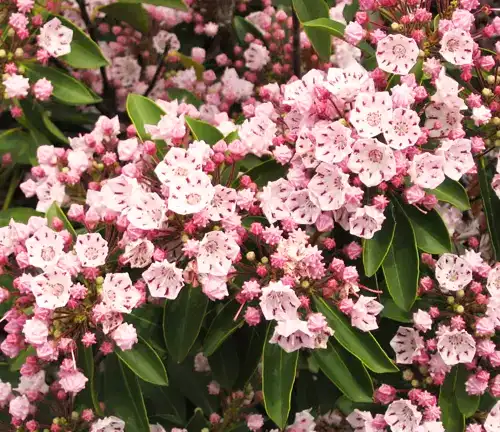
Woodland Elegance
Within the quiet depths of Eastern woodlands, Mountain Laurel reigns as a symbol of woodland elegance. Its dark green leaves and clusters of vibrant blooms create a tapestry of life and beauty in these otherwise serene environments. When in full bloom during late spring to early summer, this shrub transforms the forest into a picturesque canvas of colors. The dappled sunlight filtering through the canopy adds to the mystique, casting intricate shadows on the glossy foliage and the enchanting flowers, making it a visual delight to behold.
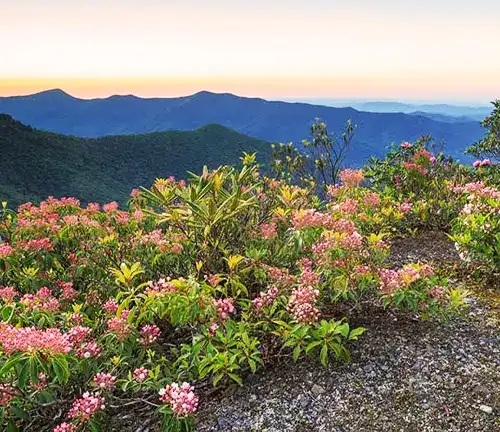
Ecological Importance
Beyond its captivating appearance, Mountain Laurel plays a pivotal role in the ecosystem. Its nectar-rich blossoms beckon pollinators like bees and butterflies, contributing to the local biodiversity. By doing so, it aids in the pollination of various plant species, fostering the health and diversity of the forest ecosystem. This ecological significance underscores its importance in preserving the delicate balance of nature.

Cultivation and Conservation
Cultivating Mountain Laurel can be a gratifying experience for gardeners, as it adapts well to a variety of soils and climate conditions. However, there’s a crucial responsibility that comes with nurturing this plant. It’s important to note that all parts of Mountain Laurel are toxic if ingested. This knowledge is vital for both gardeners and conservationists. Conservation efforts are crucial to maintain this natural beauty in the wild, as it’s sensitive to habitat destruction. Ensuring its preservation is not just about cherishing its beauty but also about protecting the delicate web of life it supports.

Fragrance
The Mountain Laurel is not just a treat for the eyes but also for the nose. While not overpowering, its blossoms emit a delicate, sweet fragrance that adds to its allure. The scent wafts gently through the air, enhancing the sensory experience of wandering through woodlands where Mountain Laurel thrives.
Soil Stabilization
Mountain Laurel, with its extensive root system, contributes to soil stabilization. This function is vital in preventing soil erosion, particularly in hilly and mountainous regions where it’s commonly found. By anchoring the soil, it helps maintain the integrity of these landscapes and preserves the delicate balance of the ecosystem.
Common Uses
Mountain Laurel’s ornamental appeal extends to its common uses in landscaping. Whether as a standalone shrub or part of mixed garden plantings, it adds a touch of elegance and natural beauty. It can be pruned to maintain shape and size, making it a versatile choice for various garden styles and settings.

Benefits
The benefits of Mountain Laurel go beyond aesthetics. Its contributions to pollinator populations, soil stabilization, and its fragrance make it a multi-faceted plant. Moreover, it serves as a reminder of the importance of preserving native species and their habitats. By appreciating its beauty and understanding its role in the ecosystem, we can take steps to ensure that Mountain Laurel continues to grace our woodlands and gardens, delighting our senses and nurturing the environment for generations to come.
Different Species
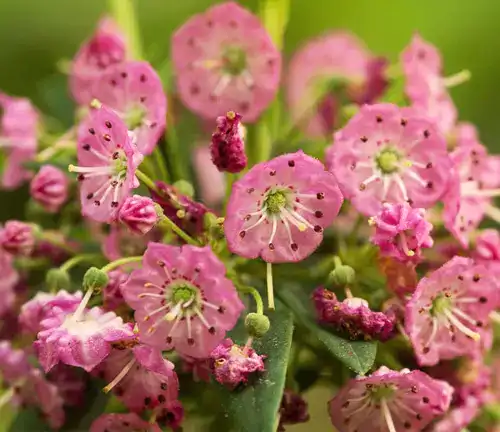
Kalmia angustifolia
(Sheep Laurel)
This species is native to eastern North America and is often found in wetlands and bogs. It has smaller and narrower leaves compared to Kalmia latifolia and produces clusters of pink to purple flowers.
Kalmia polifolia
(Bog Laurel)
Another species native to North America, Bog Laurel, as the name suggests, thrives in boggy and wetland areas. It has small, narrow leaves and produces small pink to purple flowers.
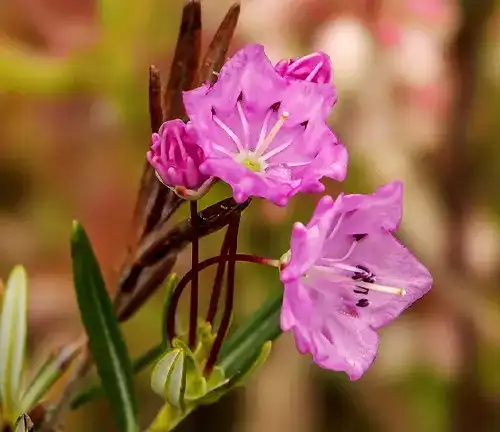

Kalmia microphylla
(Alpine Laurel)
This species is found in western North America, particularly in mountainous regions. It has tiny leaves and produces clusters of pink to reddish-pink flowers. It’s adapted to higher altitudes and harsher conditions.
Kalmia cuneata
(White-leaf Mountain Laurel)
This species is native to the southeastern United States. It features small, glossy green leaves and white to pinkish-white flowers. It’s less common than Kalmia latifolia.
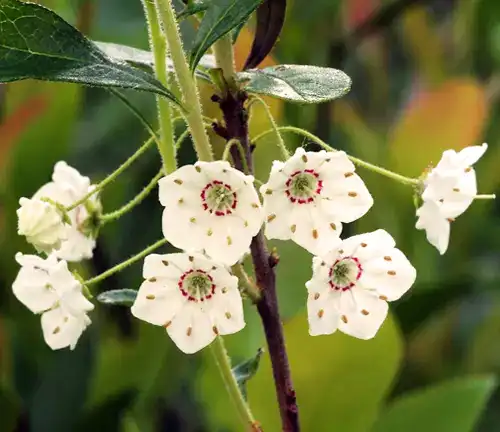
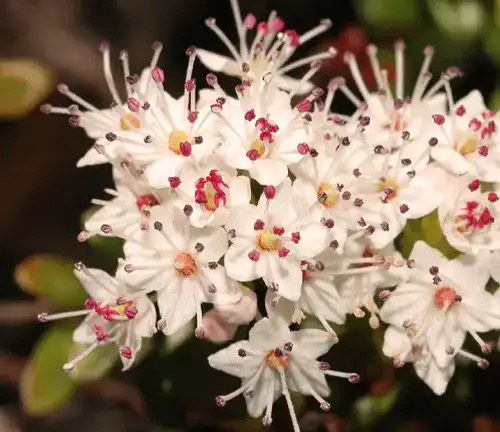
Kalmia buxifolia
(Boxleaf Laurel)
This species is native to the eastern United States and is known for its small, boxwood-like leaves. It produces pink to white flowers in clusters.
Frequently Asked Questions (FAQs)
- What is Mountain Laurel?
Mountain Laurel, scientifically known as Kalmia latifolia, is an evergreen shrub native to the eastern United States, renowned for its glossy foliage and clusters of bell-shaped flowers. - How tall does Mountain Laurel typically grow?
Mountain Laurel can range in height from 3 to 15 feet (0.9 to 4.6 meters), depending on the variety and growing conditions. - What are the flower colors of Mountain Laurel?
Mountain Laurel flowers come in a variety of colors, including white, pink, and deep rose, adding to its ornamental appeal. - When does Mountain Laurel typically bloom?
Mountain Laurel typically blooms in late spring to early summer, transforming the landscape with its vibrant flowers. - Is Mountain Laurel toxic?
Yes, all parts of the Mountain Laurel plant are toxic if ingested. Care should be taken when handling or planting it, especially if you have children or pets. - What is the ecological importance of Mountain Laurel?
Mountain Laurel serves as a vital nectar source for pollinators like bees and butterflies, contributing to local biodiversity and ecosystem health. - How can I grow Mountain Laurel in my garden?
Mountain Laurel can be cultivated in well-drained, acidic soil, and it thrives in partial to full shade. Regular pruning helps maintain its shape and size. - Can I use Mountain Laurel in landscaping?
Yes, Mountain Laurel is commonly used in landscaping as an ornamental shrub due to its beauty. It can be used as a standalone shrub or in mixed garden plantings. - What are the benefits of Mountain Laurel beyond its appearance?
Mountain Laurel contributes to soil stabilization, helps prevent erosion, and adds a delicate fragrance to the garden. It also serves as a reminder of the importance of preserving native species. - How do I care for Mountain Laurel in my garden?
Provide well-drained soil, protect it from harsh winds, and keep it adequately watered. Pruning is recommended to maintain its shape and encourage new growth. - Is Mountain Laurel endangered or protected in any way?
While it’s not typically considered endangered, certain populations of Mountain Laurel may be at risk due to habitat destruction. Conservation efforts are essential to preserve this species.


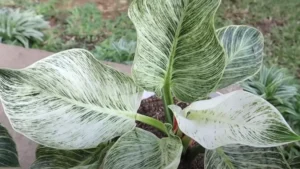
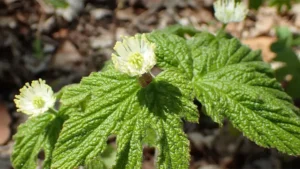
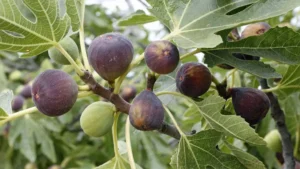
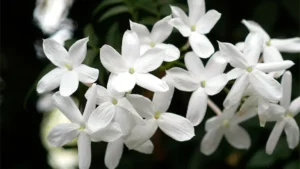



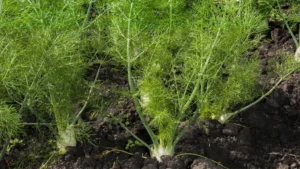
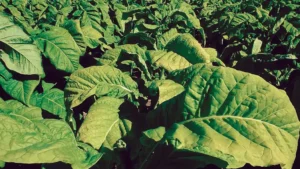
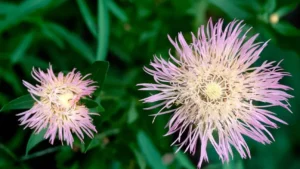
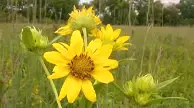
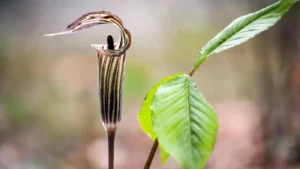
Leave your comment